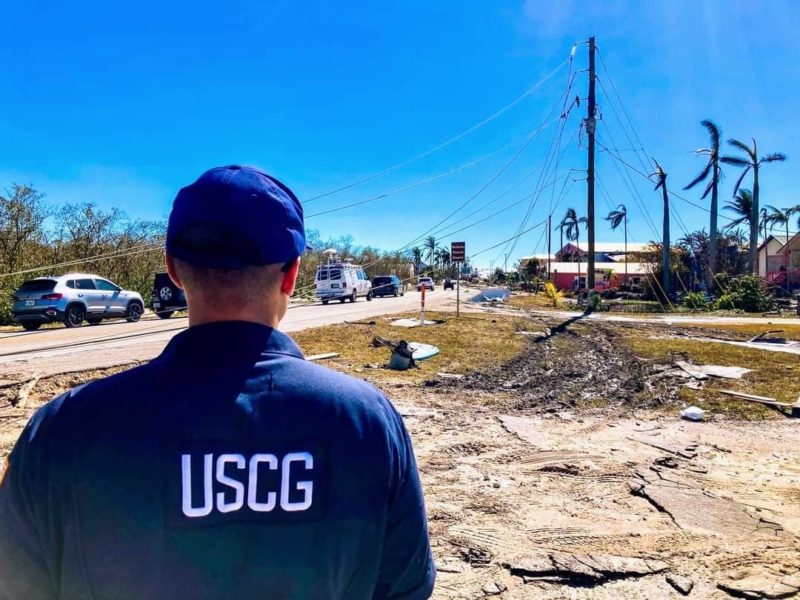Know
Insurer of last resort endures ‘unsustainable growth’

With six Florida property insurance companies already declared insolvent this year, many stakeholders saw the state taking a hit from a major hurricane as a worst-case scenario.
Just a month before Hurricane Ian brought catastrophic winds, storm surge and flooding to a wide swath of Southwest Florida, St. Petersburg-based United Property and Casualty Insurance (UPC) announced it would withdraw from operations and enter into an “orderly run-off.”
The insolvencies contributed to a massive number of customers pouring into the state-backed Citizens Property Insurance Corp., created as an insurer of last resort. By Sept. 16, about two weeks before Ian’s arrival, the company had already doubled its policies from 2020. Many experts blame rampant litigation and roofing scams for industry-wide financial problems.
St. Petersburg Sen. Jeff Brandes, a vocal proponent of insurance reform, told the Catalyst that a major hurricane adding to the industry’s turmoil was “absolutely” his worst fear. However, Mike Pelletier, a Citizens spokesperson, was mostly optimistic about his company’s ability to weather the storm.
“The way that we’re structured is to react to how the market is,” said Pelletier. “So, we’re basically structured to handle this.”
Hurricane Ian claims
Citizens estimates losses from Hurricane Ian are between $2.3 and $2.6 billion. Pelletier added the company expects less than 225,000 claims, although officials won’t know for sure until the end of this week.
When the property insurance market is healthy, explained Pelletier, the number of people relying on Citizens decreases. He used 2019 as an example, when the company held about 420,000 policies. That number has soared to around 1.1 million, but he said the insurer could handle either end of that spectrum.
Pelletier said Citizens has about $13.4 billion to pay those claims. Although, if the company exhausts its surplus and reinsurance holdings, Pelletier said it is then required to levy surcharges on policyholders or other state homeowners and auto insurance customers.
Meaning residents that have nothing to do with Citizens would cover the balance.
“So, that’s the risk,” said Pelletier. “As our numbers go up and as our exposure goes up, the risk of having to levy those assessments goes up. Given the projections on Ian right now, we’re confident that’s not going to be an issue.”
However, where does that leave other insurers that lack the state’s support?
Brandes called the market a “house of cards that was collapsing” before being hit by a Category 4 storm. While he is certain companies will pay the resulting claims, he said those that remain in the state would continue raising rates, and many more will leave. Regulators will deem others insolvent, he added.
Brandes said “not given the current trajectory” when asked if the industry would survive.
He believes that unless state lawmakers legislate sweeping reforms and further mitigate rampant litigation in Florida, the only path to survivability is exponentially raising rates. Companies have already increased prices by over 100% over the last few years, relayed Brandes, and residents are now paying three times the national average for property insurance. “And that was before Ian.”

A tree down in Northshore, St. Petersburg, following Hurricane Ian. Photo by Joe Hamilton.
Brandes explained that as prices skyrocket, residents must go underinsured with minimum coverage or join Citizens. He visited Southwest Florida last week and said much of the damage he witnessed was due to flooding, but only 15-20% of those people had flood insurance.
Citizens has about $6 billion in cash, said Brandes, and potentially $400 billion in liabilities due to the number of policyholders. He expects the company to double in size again over the next 18 months, partly because policies are priced 50% below what competitors charge.
“And so, they become a predatory competitor in the marketplace,” said Brandes. “And it’s because their rates are set by politicians, not by mathematicians.”
He explained that Ian hitting Southwest Florida helped the state-backed company, as only 10-12% of its policies are in that area. It could have been a much different story if the storm hit farther north or to the southeast, said Brandes, with Citizens holding about 25% of the Tampa Bay and Miami-Dade markets.
Continued growth
While Pelletier said he was unsure why many people believe the situation is worse than Citizens’ officials, he did note a problem with the company now receiving nearly 10,000 new policies weekly.
“And as the state’s insurer of last resort, that’s unsustainable growth.”
Ideally, Citizens would hold about 450,000 policies, said Pelletier. According to his current numbers, it now underwrites two-and-a-half times that amount.
“You want those policies to go back to the private market,” he added. “So, we’re hopeful that the market turns around, and having a hurricane doesn’t help.”
Pelletier relayed that Barry Gilway, president and CEO of Citizens, remains adamant that legislators need to reduce the amount of unnecessary litigation. He believes support for that increases as the state endures more storms.
Citing a statistic from the National Insurance Commissioners, Pelletier said Florida is responsible for 8% of property claims but 80% of lawsuits.
Brandes believes the governor will call another special session to address the insurance crisis after the November election. While he agreed that Citizens was sound when it held about 400,000 policies, he said that as more insurers pull out of the state, it will continue picking up new customers with no incentive to return to the private marketplace.
He added that lawmakers would never let a typical insurance company grow as fast as Citizens because it does not have adequate reserves.
“It was in a crisis three years ago,” said Brandes of the insurance industry. “It’s in collapse now.”







